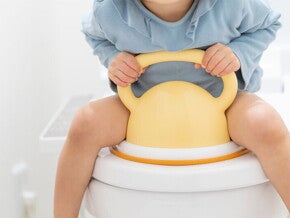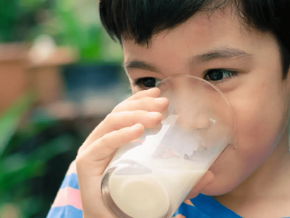
Upper vs. Lower Respiratory Tract Infection: What's the Difference?
Respiratory tract infections sound scary, but you're actually quite familiar with them. If you've ever had a cold, sore throat, or the flu, all of those fall under respiratory illnesses.
Most of these infections are mild and clear up on their own with rest, hydration, and home care. But, sometimes, a simple nasal congestion can cause breathing problems and lead to complications, particularly for children under 5 years old.
So, knowing the difference between an upper and lower respiratory tract infection will help you figure out what to do.
What Is a Respiratory Tract Infection?
A respiratory tract infection happens when a virus or bacteria affects any part of your child's breathing system, from the nose down to the lungs. They fall under two types:
- Upper respiratory tract infections (URTIs) affect the nose, throat, and airways above the lungs.
- Lower respiratory tract infections (LRTIs) involve the lungs and lower airways.
Both types can share similar symptoms at the start, like coughing or a sore throat. But here's the key difference: URTIs usually go away on their own, but LRTIs, which are common in children, require the help of a doctor.
Upper Respiratory Tract Infections: The Most Familiar to You

A stuffy or runny nose can raise the risk of ear infections (otitis media) or sinus infections (sinusitis).
If you have a toddler or preschooler, you've likely dealt with your fair share of upper respiratory tract infections.
In one 2024 study of over 14,000 pediatric consultations conducted at a rural primary care facility in Samal, Bataan, UP Manila researchers found that URTIs affected more than 3,000 kids aged 1 to 4 years old alone.
The study, published in Acta Medica Philippina, found that respiratory illnesses caused by URTIs include:
- The common cold
- Rhinitis (swollen nasal passages)
- Pharyngitis (sore throat)
- Tonsillitis (enlarged or inflamed tonsils)
These URTIs are typically caused by viruses, not bacteria, and often don't need antibiotics.
Upper respiratory tract infection symptoms and signs
In the UP Manila study, the four top chief complaints of patients with upper respiratory tract infections were:
- Cough
- Fever
- Colds
- Sore throat
Other symptoms of URTI may include:
- Stuffy or runny nose
- Sneezing
- Scratchy voice
- Headache or tiredness
You may notice your child being more clingy or having trouble sleeping. While these symptoms are uncomfortable, most kids bounce back within a week or so. (This guide on colds in newborns provides more information.)
The best way to manage a mild upper respiratory infection is with home care. Make sure your child stays hydrated, gets plenty of rest, and eats well if they have an appetite. A warm bath can also help ease a stuffy nose.
Lower Respiratory Tract Infections: When It's More Serious

A child with a respiratory tract infection may find it hard to sleep, eat, and relax.
Unlike the colds and coughs that stay in the nose and throat, lower respiratory tract infections go into the airways and lungs. This makes them far more serious illnesses and puts children the most at risk if left untreated.
Lower respiratory tract infections often lead to hospital visits, especially in babies and toddlers whose lungs are still developing. Nearly half of the Filipino kids in a 2022 study published in BMC Infectious Diseases had at least one LRTI by their first birthday.
Two of the most common illnesses in kids related to LRTIs are bronchiolitis and pneumonia. A 2021 review in the Pediatric Infectious Disease Society of the Philippines Journal reports that pneumonia, one of the most common lung infections, is the leading cause of death for children 1-4 years old in the Philippines.
Lower respiratory tract infection symptoms and signs
Lower respiratory tract infections can start out looking like a regular cold, but then symptoms get worse instead of better. Research shows the most common lower respiratory tract infection symptoms and signs include:
- Fever
- Runny nose
- Shortness of breath
- Rapid breathing
- Chest indrawing
- Wheezing
- Persistent cough
- Fatigue
These are manifestations that the body is struggling more than usual, and it's not something you can manage with rest and fluids alone. Have your child checked immediately if you spot any of these signs and symptoms.
Additional Red Flags
A 2024 review of respiratory infections in children in the Journal of Medicinal and Chemical Sciences reports that fever is typically the first sign of a serious respiratory tract infection in young children, especially those between 6 months and 3 years old.
The fever can sometimes get high enough to make your child irritable, sleepy, or, in rare cases, trigger a febrile seizure. It may be accompanied by the following:
- Poor appetite
- Vomiting
- Diarrhea
- Tummy aches
These symptoms can lead to dehydration if your child isn't drinking enough fluids.
Apart from wheezing, you may also hear different breathing sounds like grunting or a high-pitched noise when breathing in called stridor. Some kids may even be sensitive to light.
In severe cases, your child may look pale or develop a bluish tint around the lips or nails. This can be a symptom that they’re not getting enough oxygen and need emergency care.
Respiratory Tract Infection Causes
Respiratory infections are often caused by viruses (bacteria is less common). A 2021 study in Clinical Microbiology and Infection involving Filipino kids found that rhinovirus was the most common and the usual culprit behind the common cold.
The next runner-up was respiratory syncytial virus (RSV), known for causing serious lower respiratory infections worldwide. The third identified was enteroviruses.
Viruses like RSV, influenza, and coronavirus can cause both upper and lower respiratory tract infections. For example, flu that moves into the lungs can lead to complications like pneumonia.
Your child can catch viruses through coughs, sneezes, or touching things that have the virus on them, like toys or doorknobs. This is why respiratory illnesses tend to spread quickly in households and classrooms.
Asthma, weak immune systems, and—no surprise here—poor nutrition may put kids at higher risk of respiratory tract infections. Studies have shown that malnutrition, even in its milder forms, makes it harder for the body to fight off infections, especially for babies and toddlers whose immune systems are still developing.
Keep a Close Eye on Your Child During a Respiratory Illness
The hard part of respiratory tract infections is knowing when it's just a cold and when it's something more.
Watch your child closely and look out for changes in their breathing, feeding, energy, or behavior. When in doubt, don't rely on home remedies alone. If your child’s symptoms seem to be getting worse, or if they’re not acting like themselves, it’s more than okay to seek help early.
Staying informed, spotting the early signs and symptoms, and giving the proper care at home can help your child recover more smoothly from any respiratory tract infection.
What are your home remedies when your child has respiratory tract infections like a cold or sore throat? Share them on the ParentTeam Moms and Dads Facebook Group!
References
Gürbüz, Nida, Neslihan Zengin, Nahit Can Karaburun, Fatih Düzgün, and Alkan Bal. “A Comparison Study in Children With Lower Respiratory Tract Infections: Chest X-ray and Lung Ultrasound.” The Journal of Pediatric Research 10, no. 2 (June 23, 2023): 102–6. https://doi.org/10.4274/jpr.galenos.2023.37268
PawarJalinder Maruti and Nandimalla Vinaykumar, “Clinical Profile of Acute Lower Respiratory Tract Infections in Children Aged 2–60 Months: An Observational Study,” Journal of Family Medicine and Primary Care 9, no. 10 (January 1, 2020): 5152, https://doi.org/10.4103/jfmpc.jfmpc_624_20
Salehi, Zahra, Mohammadreza Askari, Alireza Jafari, Batoul Ghosn, Pamela J. Surkan, Mohammad Javad Hosseinzadeh-Attar, Hamed Pouraram, and Leila Azadbakht. “Dietary Patterns and Micronutrients in Respiratory Infections Including COVID-19: A Narrative Review.” BMC Public Health 24, no. 1 (June 21, 2024). https://doi.org/10.1186/s12889-024-18760-y
Tesini, Brenda L. “Overview of Viral Respiratory Tract Infections in Children.” MSD Manual Consumer Version, April 10, 2025. Accessed August 29, 2025. https://www.msdmanuals.com/home/children-s-health-issues/common-viral-infections-in-infants-and-children/overview-of-viral-respiratory-tract-infections-in-children
Tobin, Ellis H., Micah Thomas, and Paul A. Bomar. “Upper Respiratory Tract Infections With Focus on the Common Cold.” StatPearls - NCBI Bookshelf, May 4, 2025. Accessed August 29, 2025. https://www.ncbi.nlm.nih.gov/books/NBK532961/
Wang, Yan, Ruiyang Han, Xiao Ding, Junli Chen, Wenjia Feng, Chunping Wang, Runguo Gao, and Anning Ma. “A 32-year Trend Analysis of Lower Respiratory Infections in Children Under 5: Insights From the Global Burden of Disease Study 2021.” Frontiers in Public Health 13 (January 22, 2025). https://doi.org/10.3389/fpubh.2025.1483179




























